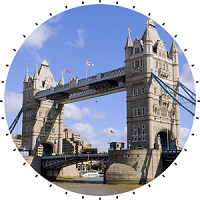History of London
Different periods in history

Although there is evidence of scattered Brythonic settlements in the area, the first major settlement was founded by the Romans after the invasion of 43 AD. This lasted only until around 61, when the Iceni tribe led by Queen Boudica stormed it, burning it to the ground. The next, heavily planned, incarnation of Londinium prospered, and it superseded Colchester as the capital of the Roman province of Britannia in 100. At its height in the 2nd century, Roman London had a population of around 60,000.
After winning the Battle of Hastings, William, Duke of Normandy was crowned King of England in the newly completed Westminster Abbey on Christmas Day 1066. William constructed the Tower of London, the first of the many Norman castles in England to be rebuilt in stone, in the southeastern corner of the city, to intimidate the native inhabitants. In 1097, William II began the building of Westminster Hall, close by the abbey of the same name. The hall became the basis of a new Palace of Westminster.
While the City of Westminster developed into a true capital in governmental terms, its distinct neighbour, the City of London, remained England's largest city and principal commercial centre, and it flourished under its own unique administration, the Corporation of London. In 1100, its population was around 18,000; by 1300 it had grown to nearly 100,000. Disaster struck in the form of the Black Death in the mid-14th century, when London lost nearly a third of its population. London was the focus of the Peasants' Revolt in 1381.
With the advent of the Tudor dynasty in England, the era of absolute monarchy began. The centralization of power in the hands of the king led to the fact that the capital began to develop and grow rich even faster than before. Favorable impact on the city during the reign of Henry VIII and Edward VI - the famous London parks Hyde Park and Kensington Garden were founded and several large hospitals were opened.
The reformation that took place in England under Henry VIII did not end, unlike other countries, bloodshed: here the church reforms were controlled by the king and were initiated "from above," not "from below," as in most other countries. After the Reformation, about half of London's square was occupied by religious buildings, and about a third of the population were monks. The situation changed in 1538-1541, after Henry VIII issued a law on the primacy of the king over the church. After that, a large part of the church property was confiscated and handed over to the king and his closest vassals.
London has developed to one of the largest shopping centers in Europe. Small businesses flourished in the city, and large English owners conducted their trade around the world - from Russia to America.
London was the world's largest city from about 1831 to 1925. London's overcrowded conditions led to cholera epidemics, claiming 14,000 lives in 1848, and 6,000 in 1866. Rising traffic congestion led to the creation of the world's first local urban rail network. The Metropolitan Board of Works oversaw infrastructure expansion in the capital and some of the surrounding counties; it was abolished in 1889 when the London County Council was created out of those areas of the counties surrounding the capital. London was bombed by the Germans during the First World War, and during the Second World War, the Blitz and other bombings by the German Luftwaffe killed over 30,000 Londoners, destroying large tracts of housing and other buildings across the city. Immediately after the war, the 1948 Summer Olympics were held at the original Wembley Stadium, at a time when London was still recovering from the war.





